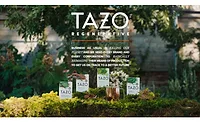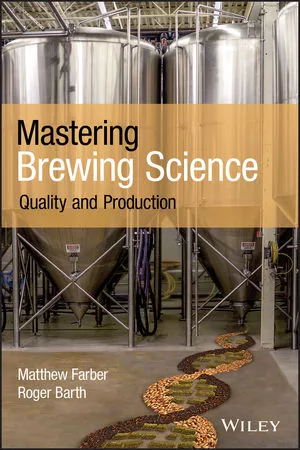Production to a Tea
![]()
Production to a Tea
Celestial Seasonings
boasts the largest and most modern specialty tea manufacturing facility in
the country, and it uses its plant to complement its consumer marketing
message, conducting daily tours through the milling, blending and packaging
processes at the plant. Visitors pass through the plant to get a glimpse of
how the tea is made and enjoy the products in the company’s
café.
“A lot of our quality control processes and
procedures are in place with the expectation that we’re going to be
bringing 90,000 people through the facility, so we want to make as much as
possible available to them to give them a good sense of who we are, and at
the same time maintain the integrity of our product,” says David
Ziegert, plant manager.
Ingredients such as herbs, spices and teas are sourced
from more than 35 countries throughout the world, depending on which
country produces the highest quality herbs and ingredients each year.
Partnering with growers, Celestial Seasonings is involved in many of the
local communities where the ingredients are grown.
Every ingredient is cleaned, cut and sifted during the
milling process at the plant. The blend master determines the correct mix
of flavors before the concoction is transferred to the mixing bins, which
are designated by blend to ensure that unwanted flavors are not
inadvertently mixed with the wrong batch. The mixing bins are also
separated by organic or natural blends to adhere to regulatory standards.
Once the teas are blended, the mix is fed into a
hopper via gravity, which delivers the dry mixture into a bagging machine
to begin the packaging process.
“We have two milling processes. One mill that we
use is a pulverizing type mill used primarily for spices and other
hard-to-cut ingredients. Another mill, which uses a cutting action,
allows us to achieve a very precise cut through the utilization of various
screens,” Ziegert says. “Our goal is to reproduce flavor time
and time again. There are many factors and components that go into
achieving that goal. Particle size is one of them. We want to get a
particle size fine enough so water can contact every little piece within
the blend. This will allow the infusion to be consistent from tea bag to
tea bag. At the same time, we don’t want the particle to fall through
the tea bag.”
Once the herbs are processed, they are shaken through
screens into 1,000-pound plastic bins for storage or transportation from
department to department.
Individual herbs go into hoppers where they are
combined with other ingredients to formulate a blend. The herbs and
ingredients are tumbled together to ensure a consistent, uniform blend.
The blend master does one final taste and approves or modifies it
before it goes into packaging.
While certain herbs such as hibiscus are stored in an
open warehouse facility within the plant, separate rooms exist for storing
black, green and white teas, organic teas, and peppermint, which is the
highlight during tours due to the strong aroma. A 90-day ingredient supply
is housed in the onsite warehouse, and 1.5 billion tea bags are produced
each year.
There are five manufacturing processes at Celestial
Seasonings. One of these processes is the production of marketing and
sampling “packets.” This consists of two or four tea bag packs
distributed in newspapers and direct mail campaigns. Celestial Seasonings
teas that are distributed abroad in Spanish and French packaging are
individually prepared for shipment on a line that also is responsible for
custom store displays for accounts such as Wal-Mart and Kroger.
Foodservice packs are produced on a bagging machine
that incorporates paper tags and string for steeping, while the other
tea-bagging machines create a dual package design, or “pillow”
tea pack. The tea-bagging machines feed into packaging lines where the tea
bags are heat-sealed before being inserted into a box, which is fitted with
a wax-lined paper to preserve freshness, wrapped in polypropylene and sent
to the palletizer.
Three robotic palletizers, that are part of the
plant’s packaging process, solidify the facility’s continued
commitment to automation and improving the operation. It also uses case
printers that generate readable bar codes on the outside of each case specific to contents. Additionally, while it’s
not mandated to comply with RFID, Celestial Seasonings has been
investigating opportunities to apply this technology into its finished
product.
Having automated systems has increased efficiencies in
the plant. It also helps maintain inventory and manage more complex product
lines in its offsite distribution center. Located one mile from the plant,
the warehouse maintains 30 days of inventory, which is transported by
contract carriers to retailers.
But it’s not only the systems in place that have
been affected by the integrated technology. The skill set of Celestial
Seasonings employees has had to keep up with scanning, filling, sealing and
printing advances.
“We’ve seen a transition from operators
and technicans being solely mechanically inclined to needing a work force
with the ability to work with computers and highly sophisticated servo
motors and machinery,” Ziegert says. “We hire people with a
modified skill set. We work closely with our vendors [for training] to
ensure our employees have the necessary foundation to effectively operate
this equipment and use this evolving technology to produce the best
products.”
To promote safety on the plant floor, the company has
instituted a “safety jackpot” program that rewards employees
with prizes for consecutive days without accidents.
Finding the right herb
The quality of ingredients is important to ensure the
teas taste consistent batch after batch. Being flexible in its herb and tea
procurement is significant to its success as a specialty tea manufacturer,
especially considering the environmental issues that can come into play.
“We work with a number of potential
suppliers,” says Steve List, president of Celestial Seasonings.
“Every ingredient we source from at least two countries in case of
social, economic, political or environmental issues. We source from a lot
of countries where we’ve worked with their growers during the past 20
to 30 years and they actually plant for us. We give the forecast to the
growers before they plant to try to give them an estimate of how much to
plant.”
“What we do is go directly to the source,”
Ziegert adds. “We try to source from the best supplier within each
region. We are working with second or third generations… of some of
these suppliers.”
Celestial Seasonings prides itself in avoiding the
middleman in the ingredient procurement process, working directly with a
number of suppliers throughout the world. To avoid potential pitfalls with
sourcing, the process of blending involves three or four harvests of an
herb from a number of regions of the world. Using a number of harvests in a
blend also averts flavor issues related to environmental changes. BI
Blends depend on keen senses
The task of tasting teas to ensure consistency is no
easy feat. The Celestial Seasonings blend master, Charlie Baden, must try
each blend multiple times each day. He also tests raw materials before they
are blended. Additionally, the blend master is involved in the milling
process to determine what ingredients are needed to make the blend.
“We have a quality assurance lab, a blend master
and an assistant blend master in training. This is necessary because
it takes several years to acquire the skills for it,” says Steve
List, president. “Our blend master can taste a raw herb blind and
tell you what herb it is and from what part of the world it comes
from.”
“The bins hold as many as 1,000 pounds of tea and the blend master has such a refined palate he can
sense if something is missing as little as one-tenth of 1 percent of the
blend. For a 1,000 pound blend he could be adding 8 to 10 pounds of a
particular ingredient to get the correct blend profile,” adds David
Ziegert, plant manager.
Creating blends at Celestial Seasonings is not an
exact science. Humidity, shelf life and product variability causes the
taste of teas and herbs to change. Therefore, the company doesn’t use
an absolute formula for developing its teas.
“We compare everything to the gold standard and
our blend master will add a pound of this or pound of that to make up for
all of the factors that can influence each cup of tea,” List says.
Looking for a reprint of this article?
From high-res PDFs to custom plaques, order your copy today!






